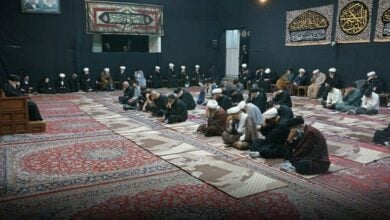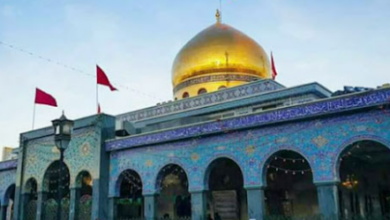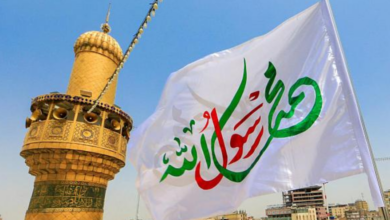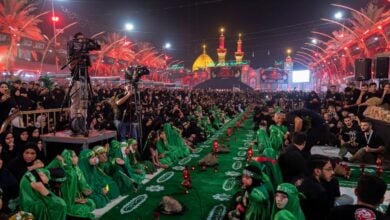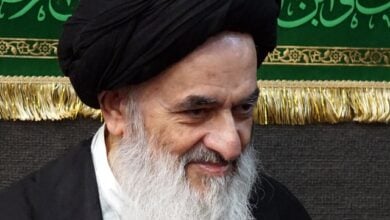Joyous Days of Shia Muslims Begin with Celebration of Farhat al-Zahra, peace be upon her

The 9th of Rabi’ al-Awwal marks the end of mourning for the Ahl al-Bayt (peace be upon them) and the beginning of joy and celebration for Shia Muslims worldwide. Several traditions have been narrated on the significance of this day from the immaculate Imams (peace be upon them), and several Shia scholars have shared insights regarding its importance. Recommended practices for this auspicious occasion, known as Farhat al-Zahra and the Second Ghadir, have also been highlighted in many hadiths.
With the arrival of the 9th of Rabi’ al-Awwal, the death anniversary of a major enemy of the Ahl al-Bayt, peace be upon them, celebrations commence among Shia Muslims across the globe.
In honor of this occasion, lovers of the Ahl al-Bayt engage in festivities called “Farhat al-Zahra,” celebrating the joy of Lady Fatimah (peace be upon her) after two months of mourning for Imam Hussain (peace be upon him).
The 9th of Rabi’ al-Awwal is regarded as the second major holiday for Shia Muslims, also referred to as the Second Ghadir. In Mafatih al-Janan, this day is noted as Eid al-Baqr (the Day of Splitting), commemorating the joy of Lady Fatima, marking the fulfillment of her prayer.
The Second Ghadir, alongside the First Ghadir, represents significant moments for expressing Tawalli (love and loyalty) and Tabarri (enmity and disassociation), prompting scholars and religious authorities throughout history to emphasize the importance of commemorating these days.
Seyyed ibn Tawus narrates in his book Zawaid al-Fawaid that Ahmad ibn Ishaq Qummi asked Imam Hassan al-Askari (peace be upon him) if any new joy had arisen for the Ahl al-Bayt on this day. The Imam replied that there is no day more revered by the Ahl al-Bayt than the 9th of Rabi’ al-Awwal.
According to this narration, Imam Hassan al-Askari further stated that he designated this day as a holiday for all Shia; those who celebrate it will have their sins forgiven, their deeds accepted, and they will be guaranteed intercession by us.
Additionally, in his book Zad al-Ma’ad, Allameh Majlisi reports that Amir al-Mu’minin Ali ibn Abi Talib (peace be upon him) declared, “By God, this day is the one in which Allah illuminated the eyes of the descendants of the Messenger.” He mentioned seventy-two names for this day, including the Second Ghadir, the day of sin forgiveness for Shia, the day of answered prayers, the day of God’s power manifesting, and the day of joy for Shia.
Sheikh Abbas Qummi writes in his book Waqa’i al-Ayyam that the 9th of Rabi’ al-Awwal is a momentous day, a day of joy for Shia and a major holiday. The Prophet (peace be upon him and his family) established this day as a holiday and instructed people to celebrate it. Those who give charity on this day will have their sins forgiven. It is recommended to feed fellow believers, please them, increase charitable acts, wear new clothes, and express gratitude and worship to God, as this day is one of alleviating sorrows.
The author of Jawahir al-Kalam notes in volume five that he encountered a detailed narration from the Holy Prophet (peace be upon him and his pure family) regarding the significance and blessings of this day, emphasizing its status as a day of joy and celebration.
The esteemed religious authority Ayatollah Sayyid Sadiq al-Hosseini al-Shirazi has also stated regarding the 9th of Rabi’ al-Awwal: “The mourning period for the Ahl al-Bayt continues until the 8th of Rabi’ al-Awwal, the martyrdom anniversary of Imam Hassan al-Askari. Following the directives of the Imams (peace be upon them), we mourn during this period, and on the 9th of Rabi’ al-Awwal, which is declared a festive holiday by the Imams, we celebrate and share in their joy.”
Acts of feeding believers, expressing joy, pleasing others, increasing charitable contributions, wearing new garments, and worshiping God are among the recommended practices for the 9th of Rabi’ al-Awwal.


